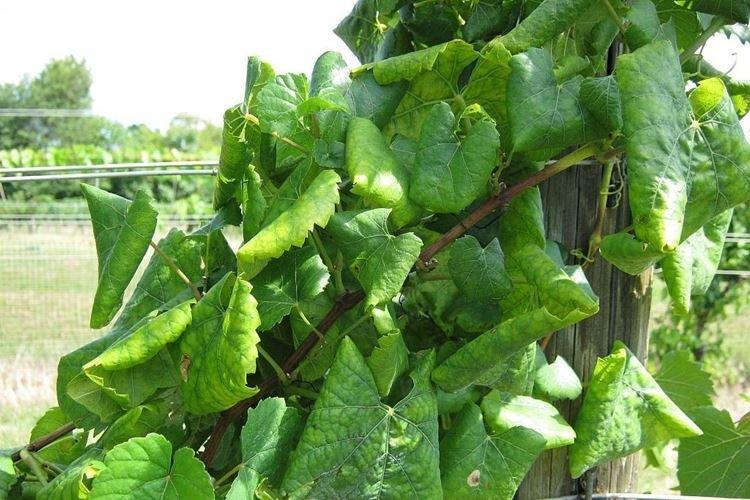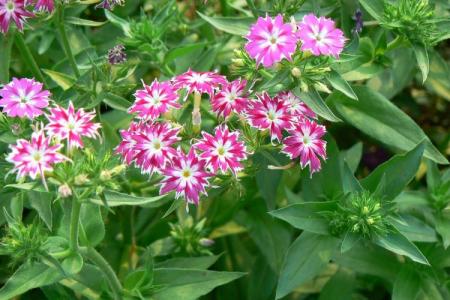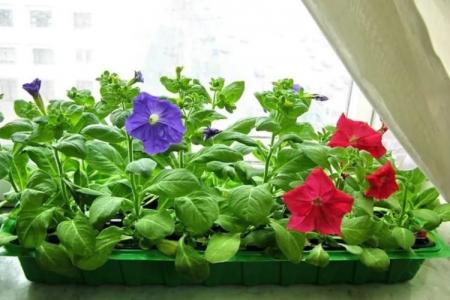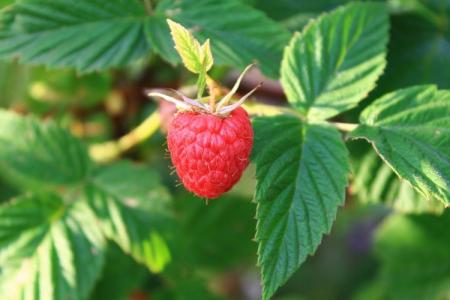
Having your own vineyard is a very tempting prospect, but it definitely requires proper care. Even the most beautiful vine is not immune from disease and problems. The leaves suffer first, and this is a sure sign that urgent action is needed. We will tell you what diseases of the leaves of grapes you can face and what to do with them!
Bumps and bumps on the leaves
Yellowness is by no means the only way for a plant to respond to illness or improper living conditions. The spots on the leaves can be of different colors, and sometimes they become textured. This slightly simplifies the search for the cause, because most often it is pests.
- The growths and swellings on the leaves are galls that cause aphid larvae. The phylloxera aphid is the main enemy of American and European grape varieties;
- Another parasite that creates textured marks on the leaves is itching. It leaves tubercles on the front surface of the plate, and hollows covered with hairs remain on the reverse side;
- In the worst case, growths appear on the leaves of grapes due to bacterial cancer. It is accompanied by the formation of tumors and ulcers along all the shoots. The disease cannot be cured, so you need to quickly get rid of the damaged vine.
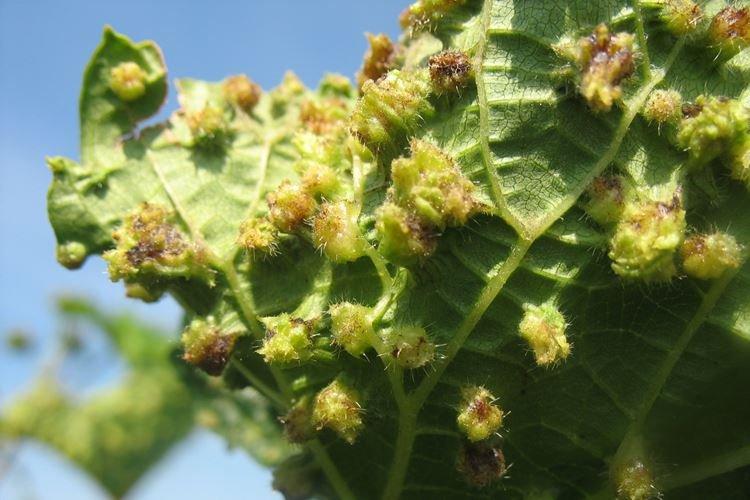
Leaves turn yellow and dry
If the old vine turns yellow towards the end of the season from the bottom up, this is a natural process. But if young shoots turn yellow at the height of summer, you should worry.
- Chlorosis is the reaction of grapes to a lack of trace elements, in particular magnesium. Less commonly, there is a deficiency of iron, zinc and other useful components. In this case, a complex feeding is urgently needed;
- The grapes turn yellow and dry due to lack of moisture, so adjust the watering regime;
- And if the leaves turn yellow, but become softer - this is a sure sign of decay, but already due to an excess of water;
- When the yellow leaves slowly dry out from the ends, it is possible that the grapes are too hot. On hot days, the scorching sun is detrimental to most plants;
- The leaves turn yellow and wither if there is not enough sunlight, because the process of photosynthesis directly depends on it;
- Randomly scattered spots of irregular shape, which form like a mosaic pattern - a symptom of a mosaic. It is an incurable virus that is still poorly understood, but most of its strains manifest in the same way;
- Verticillosis is another reason why grape leaves gradually turn yellow and fall off. In parallel, the shoots quickly fade, and the nodes begin to unevenly lignify.

Brown spots on the leaves of grapes
Sometimes the spots on the leaves acquire a more intense dark shade - orange, brown, brown. And there are reasons for that too!
- Most often, small dark spots randomly located on the leaves are a symptom of anthracnose. In the future, these spots will become more and more until the leaf dies;
- Bright and seemingly rusty spots indicate the disease of the same name - rust. This is another fungus that affects most horticultural crops;
- If the grape leaves first turned yellow, and then began to turn red and soften, this may be a symptom of putrefactive processes and even root rot. It is necessary to carefully examine the root zone, reduce the watering regime and treat the plant with fungicides;
- Brown spots on the leaves in combination with black spots on the shoots are a symptom of black rot. The same spots on the berries are deformed and seem to sink;
- Light brown spots covered with a velvety bloom with a pronounced shine - a sign of Alternaria. In the future, they turn into necrotic foci.
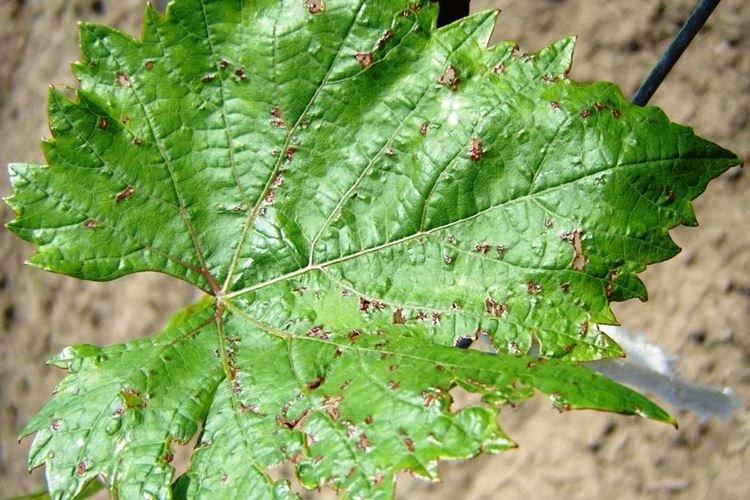
The leaves of the grapes turn black
If the leaves openly turn black, these are manifestations of necrosis, and emergency measures must be taken!
- On wet, cool days, the Phomopsis infection thrives, due to which the leaves turn black, the shoots turn white and the berries rot;
- Blackening oval dots on the leaves and all other parts of the grapes are the first symptoms of black spot. A dangerous disease completely affects the vine and causes necrosis;
- Dark spots or light spots with black centers appear due to cercosporosis. The fungus hibernates safely in the ground and develops actively during the flowering of the grapes. Black dots are visible even under the skin of ripening berries;
- If the leaves first turned yellow, and then began to turn black, and the grapes wither and fall off, try feeding it with potassium;
- Less often, the reason for blackening is too clayey soil, because the roots of the grapes do not take root well and suffocate in such a dense soil.
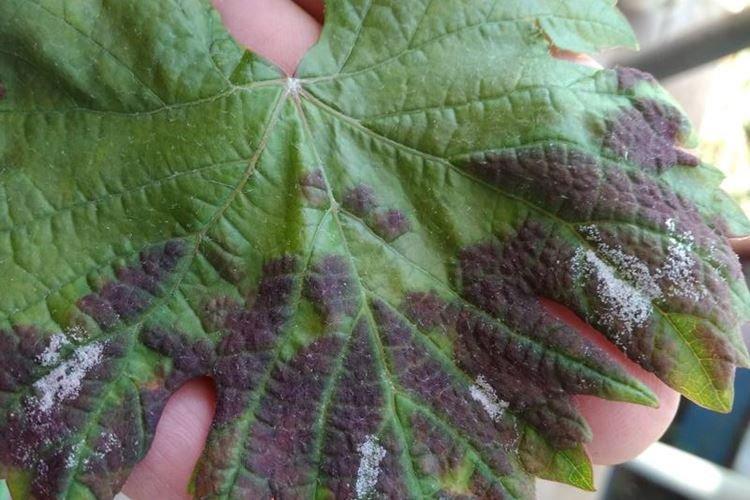
White bloom on grape leaves
White bloom is a sure sign of fungal diseases, because in fact these are future myceliums and spores.
- The first reason for the appearance is powdery mildew, which spreads on hot dry days. The plaque gradually takes on a grayish tint, and the berries crack;
- Mildew is the most common grape disease in mid-latitudes. This is downy mildew, which is promoted by damp, cool days;
- If the plaque is initially gray, it may be gray rot. Grapes that have already formed wrinkle, become covered with the same bloom and rot;
- A spider mite leaves behind a white coating that resembles a cobweb. Every gardener has encountered him at least once. Damaged leaves first turn yellow, and then turn red from the veins.
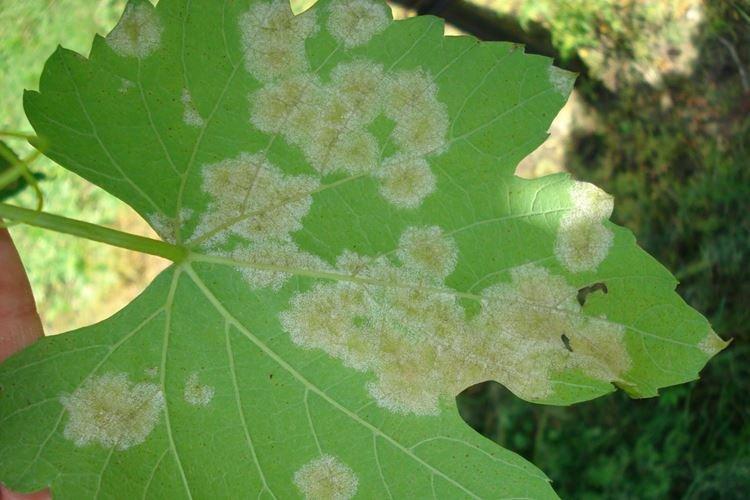
Pale and light leaves
Sometimes grape leaves do not turn yellow, but seem to fade and fade. We have already figured out the possible reasons!
- If young shoots grow too faded, then the immunity of the grapes is weakened. Use special immunomodulatory drugs, because otherwise this is a sure way to serious illness;
- If the soil is too depleted, young shoots also turn pale and weaken. Therefore, it is imperative to adhere to the feeding schedule;
- Healthy adult leaves are deformed at first, and then become covered with light spots due to white rot. Always treat any cuts and wounds, because this fungus most often penetrates through mechanical damage.
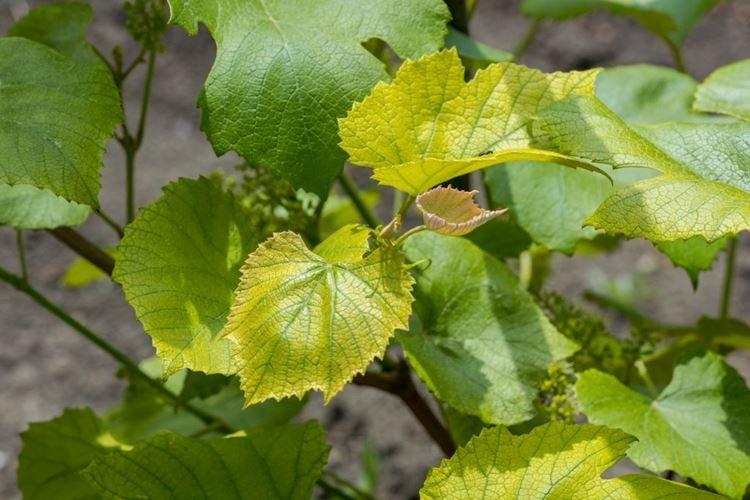
The leaves of the grapes are curled
If the leaves began to deform - this is also an alarming symptom, so do not be mistaken. This is far from a question of aesthetics, because as a result, the entire crop may die!
- The most dangerous option is the virus of the same name, which is rapidly spreading across the entire vineyard. The amount of the crop is halved, and the remaining bunches are much worse in taste and quality;
- In the best case, the leaves can curl due to lack of oxygen. Therefore, you do not need to thicken the grapes too much to save space and do not forget to periodically thin out the plantings;
- If the leaves curl up, wither and dry at the same time - most likely, the grapes simply lack water;
- Due to the lack of potassium, the plates turn down, and due to the lack of phosphorus, young leaves also darken. If the sheet is bent in shape like a boat, there is not enough molybdenum. And when the edges are bent up and the leaves become smaller, the problem is zinc.
